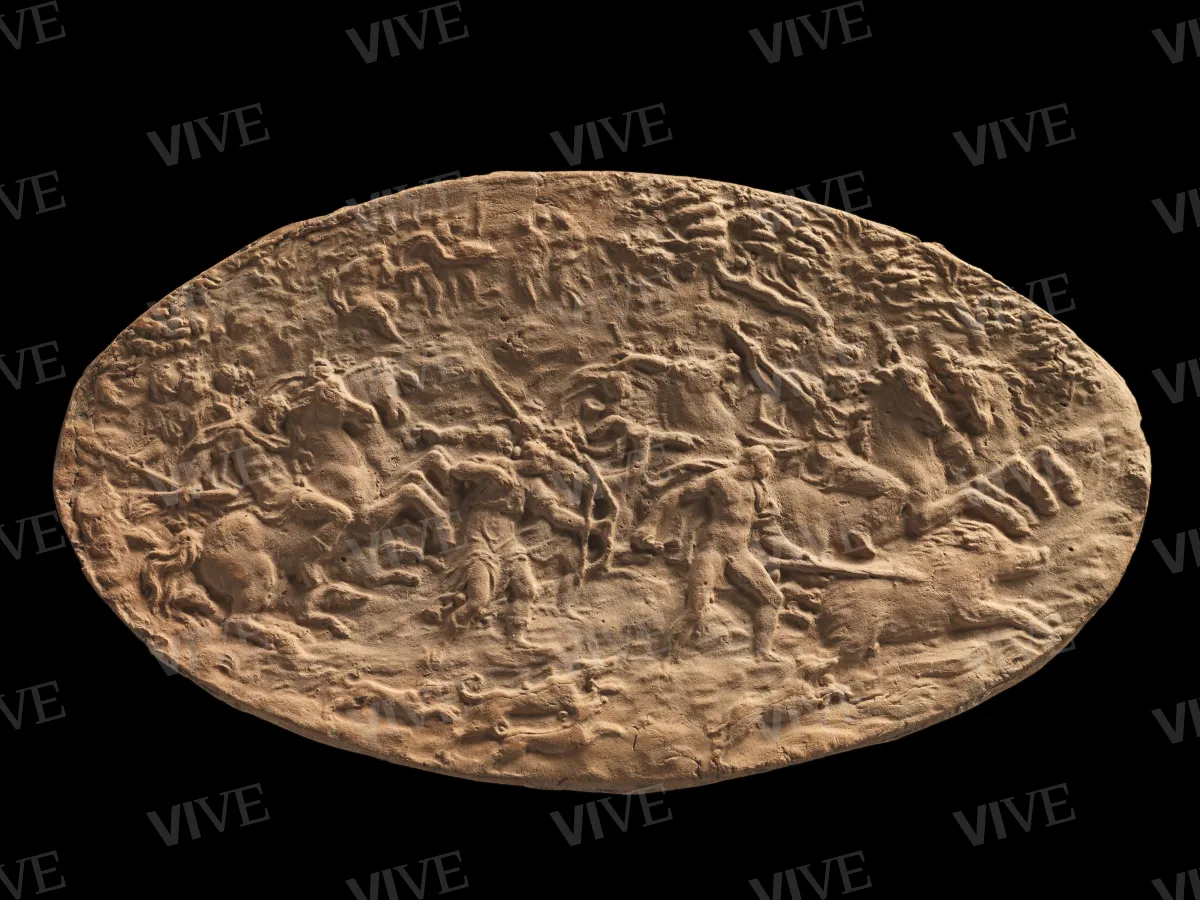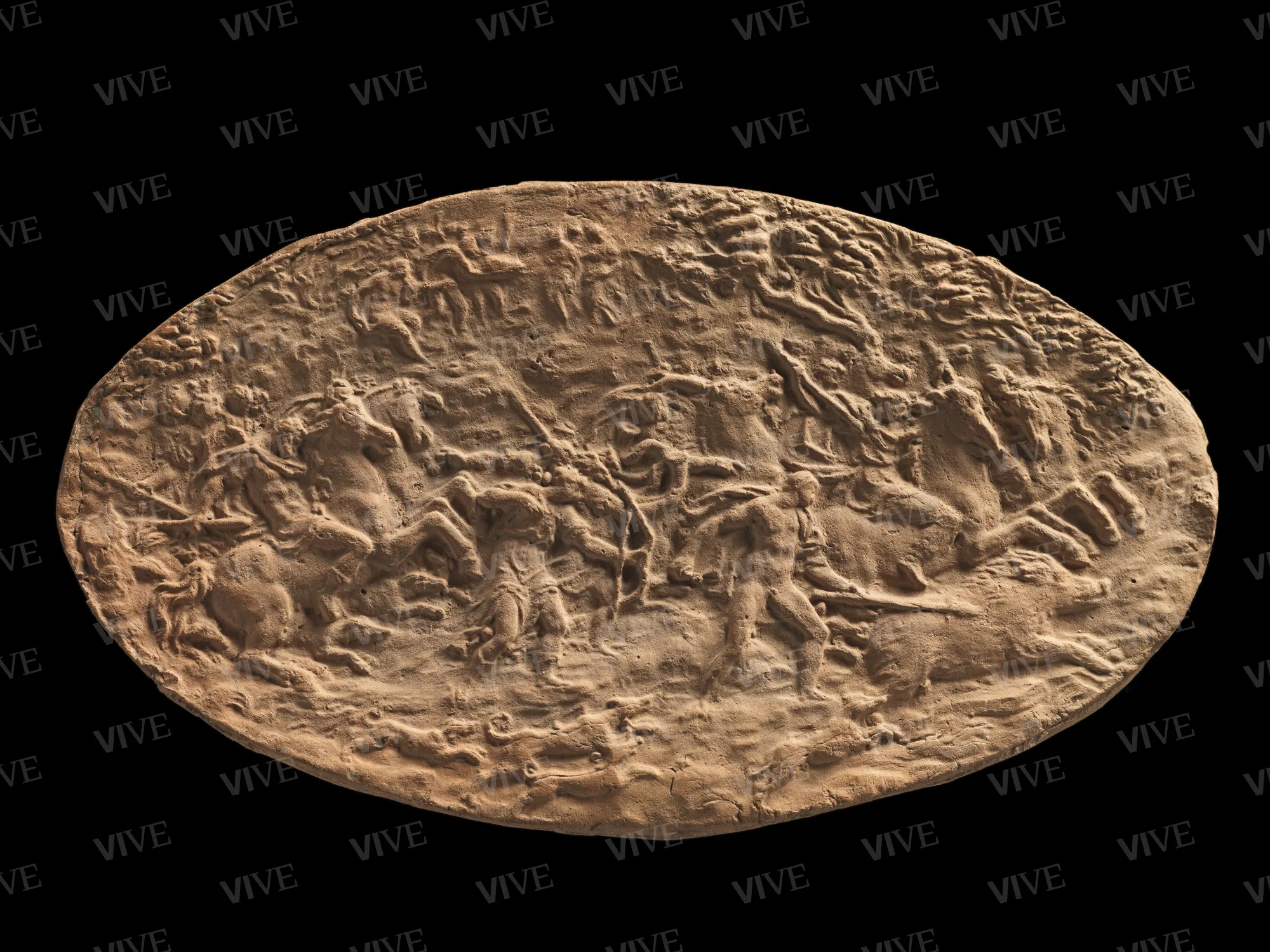The Hunt of Meleager
From Guglielmo Della Porta 1560–1609
The plaque is one of sixteen mythological reliefs created by Guglielmo Della Porta in the latter half of the sixteenth century, intended to decorate furniture such as a cabinet or an inlaid table. The depiction of the Calydonian boar hunt provides the artist with an opportunity to illustrate animals, horsemen, and soldiers in a grand procession surrounding Atalanta, who injures the boar with an arrow, and Meleager, who is poised to deliver the final blow with a javelin.
The plaque is one of sixteen mythological reliefs created by Guglielmo Della Porta in the latter half of the sixteenth century, intended to decorate furniture such as a cabinet or an inlaid table. The depiction of the Calydonian boar hunt provides the artist with an opportunity to illustrate animals, horsemen, and soldiers in a grand procession surrounding Atalanta, who injures the boar with an arrow, and Meleager, who is poised to deliver the final blow with a javelin.
Details of work
Catalog entry
For details on the mythological cycle of sixteen reliefs to which this plaque belongs, refer to the entry for the Dance of the Nymphs (inv. 10836). For information on the subject, consult the entry for the bronze relief depicting the same scene from the collection of Giacinto Aurito (inv. 10837). The wear and tear on this terracotta piece, which is even more pronounced than in the two other reliefs from Alessandro Tomassi's bequest (the Massacre of the Niobids, inv. 10153; and the Bacchanal, inv. 10152), obscure certain elements that are crucial for a full understanding of the relief. Federico Hermanin (1948) did not reference this relief or the one depicting Priapus and Lotide (inv. 10155), which is missing a third of its surface. Despite the wear on the surface, the compositional strength of the scene remains intact, and features Atalanta and Meleager prominently in the center of an elliptical formation created by rearing horses, hunters, and a pack of dogs. Another terracotta representation of this scene, preserved at the Victoria & Albert Museum (inv. A27-1928), is in much better condition and exhibits more precise detail than the bronze relief in the complete series housed in Vienna (Kunsthistorisches Museum, inv. KK. 7758). The attribution of the London terracotta to Jacob Cobaert (c. 1530-1615), a Flemish collaborator of Della Porta, as proposed by Werner Gramberg (1960, pp. 42–43), has been accepted by critics, despite lacking supporting evidence. Given its fidelity to the prototype, it is more compelling to attribute the work to Della Porta. Meanwhile, the plaque in the Museo di Palazzo Venezia can be regarded as a cast produced either before or after the artist’s death (Malgouyres 2010). If it wasn’t created shortly after the completion of the cycle (1555–1560), the relief would then date between the theft from the studio in 1589 and the judicial investigation initiated by Teodoro Della Porta in 1609 to halt the illegal reproduction of his father’s models on the Roman market (Bertolotti 1881, II, 119–161).
Grégoire Extermann
Entry published on 12 June 2025
State of conservation
Fair.
Restorations and analyses
The black paint applied to create a faux bronze on the relief was removed sometime between its acquisition by the Museo di Palazzo Venezia in 1939 and its display in an exhibition in 1982 (Cannata 1982, 76).
Inscriptions
Back of the plaque, painted in red at the top of the central axis: “10154.”
Provenance
Rome, Collezione Alessandro Tommassi (1886–1952);
Rome, Museo Nazionale di Palazzo Venezia, 1939.
Exhibition history
Rome, Museo Nazionale di Palazzo Venezia, Rilievi e placchette dal XVI al XVIII secolo, February 1–April 30, 1982.
References
Bertolotti Antonino, Artisti Lombardi a Roma nei secoli XV, XVI, XVII, 2 voll., Milano 1881;
Hermanin Federico, Il palazzo di Venezia, Roma 1948;
Gramberg, Werner, Guglielmo della Porta, Coppé Fiammingo und Antonio Gentile da Faenza, Jahrbuch der Hamburger Kunstsammlungen, 5, 1960, pp. 31-52;
Cannata, in Casanova Maria Letizia, Cannata Pietro (a cura di), Rilievi e placchette dal XVI al XVIII secolo, catalogo della mostra (Roma, Museo Nazionale di Palazzo Venezia, 1 febbraio-30 aprile 1982), Roma 1982, pp. 72-76, n. 70;
Zanuso, in Di Lorenzo Andrea, Frangi Francesco (a cura di), Raccolta Mario Scaglia, Dipinti e sculture, medaglie e placchette da Pisanello a Ceruti, catalogo della mostra (Milano, Museo Poldi Pezzoli, 30 ottobre 2007-30 marzo 2008), Cinisello Balsamo 2007, p. 228;
Malgouyres, in Malgouyres Philippe, Ivoires de la Renaissance et des Temps modernes; la collection du Musée du Louvre, Paris 2010, p. 120, nota 4;
Rossi Francesco, La collezione Mario Scaglia, Bergamo 2011, p. 354.












